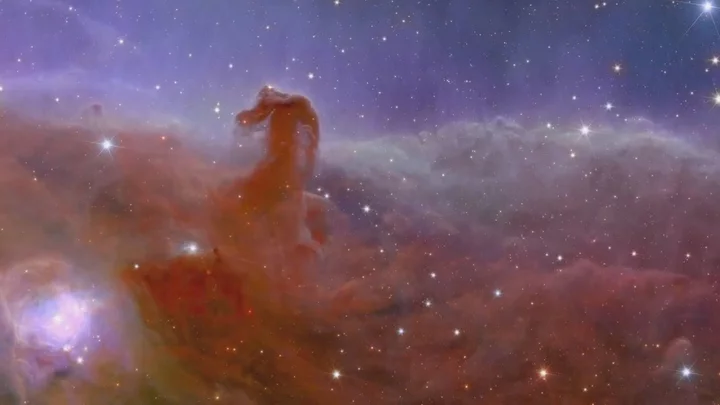
Scientists say you don't need to be religious to have a 'moral compass'
Scientists have decided it’s official – people do not necessarily have to believe in a “god” to have a moral compass. A group of four University of Illinois surveys found that while there were subtle differences in behaviour between groups of atheists and religious people – or “theists” – they live by the same moral codes. Tomas Ståhl of the University of Illinois said: “The most general take-home message from these studies is that people who do not believe in God do have a moral compass. "In fact, they share many of the same moral concerns that religious believers have, such as concerns about fairness, and about protecting vulnerable individuals from harm.” The first two surveys crowdsourced responses from hundreds of American residents, and found that religion was unrelated to amoral tendencies, whether people would endorse liberty or oppression or whether people cared about being fair to others. The second two surveys compared thousands of people across the US and Sweden, which is a much more secular country. The data came up with the same results. Mainstream religions are on a downward trend worldwide. In the UK, for example, just 46 percent of people identified as Christian in the 2021 census, compared to 59 percent in 2011. The US has seen similar declines. Ståhl added: “However, disbelievers are less inclined than believers to endorse moral values that serve group cohesion, such as having respect for authorities, ingroup loyalty, and sanctity… “It is possible that the negative stereotype of atheists as immoral may stem in part from the fact that they are less inclined than religious people to view respect for authority, ingroup loyalty, and sanctity as relevant for morality, and they are more likely to make moral judgments about harm on a consequentialist, case by case basis.” It’s news that will come as little surprise to the estimated 750 million atheists across the globe, of course. But for people who still think religion is the key to morality, it could be food for thought. How to join the indy100's free WhatsApp channel Sign up to our free indy100 weekly newsletter Have your say in our news democracy. Click the upvote icon at the top of the page to help raise this article through the indy100 rankings.
2023-11-20 23:29

Scientists discover fluffy 'alien' planet where it rains sand
Experts have discovered a fluffy “alien” planet where it rains sand in stunning new observations from the James Webb Space Telescope. The bizarre-looking planet is officially known as exoplanet WASP-107b and has a cloud of silicate sand that exists high within its atmosphere giving it its strange fluffy appearance. NASA’s James Webb Space Telescope (JWST) has been responsible for some astounding findings since it was launched in 2021, including a mysterious galaxy shaped like a question mark. Now, observations made by the telescope have been used by experts who have been able to determine the atmospheric composition of the exoplanet that was pictured. A team of European astronomers found that water vapour, sulfur dioxide and silicate sand clouds existed in the exoplanet’s diverse atmosphere. The exoplanet WASP-107b is one of the lowest-density planets that astronomers are aware of. To put it into context, it is the same size as Jupiter, but has just 12 per cent of Jupiter’s mass. Thanks to its low density, it has allowed scientists to take a deeper look into the planet’s atmosphere, exploring 50 times deeper than would be possible with denser planets. The discovery of sulfur dioxide was a surprise because the host star it orbits only emits a small amount of high-energy light photons. But, its low-density atmosphere allows the photons to penetrate WASP-107b’s atmosphere where the chemical reaction that creates sulfur dioxide can occur. They also discovered that it essentially rains sand on the exoplanet due to the presence of clouds high in the atmosphere made up of fine silicate particles. Experts believe the clouds of sand form in the same way as rain does on Earth as the droplets continually fall and condense back into cloud form. The lead author of the study, Leen Decin from Katholieke Universiteit Leuven in Belgium, explained: “JWST is revolutionizing exoplanet characterisation, providing unprecedented insights at remarkable speed.” She added: “The discovery of clouds of sand, water, and sulfur dioxide on this fluffy exoplanet… is a pivotal milestone. It reshapes our understanding of planetary formation and evolution, shedding new light on our own solar system.” How to join the indy100's free WhatsApp channel Sign up to our free indy100 weekly newsletter Have your say in our news democracy. Click the upvote icon at the top of the page to help raise this article through the indy100 rankings.
2023-11-20 18:29

'Lost City' deep in the Atlantic is like nothing else we've ever seen on Earth
The reality of what lies within our oceans has fascinated people since time immemorial, so it’s no wonder we’ve created countless myths about the watery depths. But step aside, Atlantis, scientists have discovered a real Lost City beneath the waves, and this one is teaming with life. The rocky, towering landscape is located west of the Mid-Atlantic Ridge mountain range, hundreds of metres below the surface of the Atlantic Ocean, and consists of massive walls, columns and monoliths stretching more than 60 metres (200ft) tall. To be clear, it’s not the home of some long-forgotten human civilisation, but that doesn’t make its existence any less significant. The hydrothermal field, dubbed the “Lost City” upon its discovery in the year 2000, is the longest-lived venting environment known in the ocean, Science Alert reports. Nothing else like it has ever been found on Earth, and experts think it could offer an insight into ecosystems that could exist elsewhere in the universe. For more than 120,000 years, snails, crustaceans and microbial communities have fed off the field’s vents, which spout out hydrogen, methane and other dissolved gases into the surrounding water. Despite the absence of oxygen down there, larger animals also survive in this extreme environment, including crabs, shrimps and eels. Although, they are, admittedly, rare. The hydrocarbons produced by its vents were not created by sunlight or carbon dioxide, but by chemical reactions way down on the seafloor. This is how life on our planet may have originated some 3.7 billion years, and how it could be formed on others. "This is an example of a type of ecosystem that could be active on Enceladus or Europa right this second," microbiologist William Brazelton told The Smithsonian back in 2018, referring to the moons of Saturn and Jupiter respectively. "And maybe Mars in the past." The tallest of the Lost City’s monoliths has been named Poseidon, after the Greek god of the sea, and it measures more than 60 metres high. Meanwhile, just northeast of the tower, is a cliffside where the vents “weep” with fluid, producing "clusters of delicate, multi-pronged carbonate growths that extend outward like the fingers of upturned hands", according to researchers at the University of Washington. There are now calls for the Lost City to be listed as a World Heritage site to protect the natural phenomenon, particularly given humans’ propensity to destroy precious ecosystems. Back in 2018, it was confirmed that Poland had won the rights to mine the deep sea around the thermal field. And whilst, in theory, the Lost City would not be touched by such works, as Science Alert notes, the destruction of its surroundings could have unintended consequences. Sign up for our free Indy100 weekly newsletter Have your say in our news democracy. Click the upvote icon at the top of the page to help raise this article through the indy100 rankings
2023-11-20 17:57

Dinosaurs still exist on other planets, say scientists
The dinosaurs may have been extinct for more than 65 million years but scientists have suggested that they could still exist as aliens on other planets. Researched published in the Monthly Notices of the Royal Astronomical Society suggests that dinosaurs might not only be on other planets but that we could also find them. The study suggests that if scientists researched compounds that are not currently on Earth but ones that were around during the age of the dinosaurs then it may yield some results. One key element that scientists believe could unlock what would be a groundbreaking discovery is oxygen. The levels of oxygen on Earth at the moment are around 21 per cent but during the time of dinosaurs it was higher at 30 per cent. This, in theory, allowed the dinosaurs to flourish and rule the planet for millions of years. The study suggests that if similar levels of oxygen can be discovered on faraway planets then the conditions could be right for alien like dinosaurs to exist. The study's co-author Lisa Kaltenegger said in a statement: "Modern Earth's light fingerprint has been our template for identifying potentially habitable planets, but there was a time when this fingerprint was even more pronounced — better at showing signs of life." She adds: "This gives us hope that it might be just a little bit easier to find signs of life — even large, complex life — elsewhere in the cosmos." One clue that could unlock this discovery which scientists are looking for are signs of a Phanerozoic stage on a planet which would allow creatures like dinosaurs to evolve. The study's lead author, Rebecca Payne of Cornell University, said: "The Phanerozoic is just the most recent 12 per cent or so of Earth's history, but it encompasses nearly all of the time in which life was more complex than microbes and sponges. These light fingerprints are what you'd search for elsewhere if you were looking for something more advanced than a single-celled organism." If they are successful in finding these conditions on other planets then Kaltenegger believes it could lead to the discovery of dinosaurs that have never been found on Earth. "Hopefully we'll find some planets that happen to have more oxygen than Earth right now because that will make the search for life just a little bit easier," she said. "And, who knows, maybe there are other dinosaurs waiting to be found." Sign up for our free Indy100 weekly newsletter Have your say in our news democracy. Click the upvote icon at the top of the page to help raise this article through the indy100 rankings.
2023-11-20 00:28

Elon Musk mocked as Starship experiences 'rapid unscheduled disassembly'
Elon Musk's SpaceX company have once again attempted to launch the world's biggest rocket, Starship, but lost contact within eight minutes of takeoff. The launch from site near Boca Chica in Texas, east of Brownsville, did see the rocket reach space for the first time but despite its super heavy booster still experienced what is called "a rapid unscheduled disassembly" - or to put it bluntly - it blew up. SpaceX's livestream host John Insprucker said during the broadcast: "We have lost the data from the second stage... we think we may have lost the second stage." Despite losing the rocket and the obvious explosion the launch has still been hailed as a success by SpaceX and far more progress was made then the first test that they carried out in April, when another 'rapid unschedueled disassmbly' occured. Although it went well from SpaceX and Elon Musk's perspective people couldn't help but be amused by the use of the 'rapid unschedueld disassembly' terminology, with many mocking Musk himself. Meanwhile, Musk is facing his own problems on X/Twitter after it was discovered that the platform had helped promote pro-Nazi and anti-semitic material alongside big name advertisers on the site. This prompted IBM, one of the biggest brands on X/Twitter, to pull all the adverts from the site. In response Musk has threatened to drop a 'thermonuclear lawsuit' on US media watchdog, Media Matters, who had released the damaging data. Sign up to our new free Indy100 weekly newsletter Have your say in our news democracy. Click the upvote icon at the top of the page to help raise this article through the indy100 rankings.
2023-11-18 22:51

A newly found ancient language in Turkey is yielding new discoveries
Archaeologists in Turkey are slowly unravelling the secrets of a previously unknown ancient language. And among them are revelations that long-forgotten civilisations used language to promote multiculturalism and political stability. The ancient clay tablets unearthed from archaeologists, in the ancient capital of the Hittite Empire at Hattusa, were recently found to contain the previously unknown language. Researchers had dusted off nearly 30,000 unique tablets at the scene – a UNESCO World Heritage Site – with most written in Hittite, and a few in the brand new language. The ongoing excavations have since revealed that the imperial civil service had whole departments whose job it was to research their subject peoples’ religions. Back in the second millennium BC, Hittite leaders told their officials to record religious ceremonies and other traditions of subject peoples by writing them in their respective local languages. The idea was that the traditions would be preserved and incorporated into the wider empire, in what appears to be a push towards multiculturalism. The fact that multiculturalism was such a prominent part of Bronze Age culture certainly has resonances in the modern day, where debates around immigration and multiculturalism continue to be a hot topic. So far, experts have found at least five subject ethnic groups who have had the treatment, with the latest example unearthed two months ago. It was written in a previously unknown Middle Eastern language that had been lost for up to 3,000 years. The language is being called Kalasmaic, because it would have been spoken by a subject people in an area called Kalasma in the northwest of the empire. And while only five minority languages have so far been found on the Bronze Age tablets, the reality is that there were probably at least 30, archaeologists say. Daniel Schwemer, a Wurzburg University professor who is leading the investigation into the newly discovered texts, said: “Bronze Age Middle Eastern history is only partly understood – and discovering additional clay tablet documents is helping scholars to substantially increase our knowledge.” How to join the indy100's free WhatsApp channel Sign up to our free indy100 weekly newsletter Have your say in our news democracy. Click the upvote icon at the top of the page to help raise this article through the indy100 rankings.
2023-11-18 00:17

Biggest-ever simulation of the universe could finally explain how we got here
It’s one of the biggest questions humans have asked themselves since the dawn of time, but we might be closer than ever to understanding how the universe developed the way it did and we all came to be here. Computer simulations are happening all the time in the modern world, but a new study is attempting to simulate the entire universe in an effort to understand conditions in the far reaches of the past. Full-hydro Large-scale structure simulations with All-sky Mapping for the Interpretation of Next Generation Observations (or FLAMINGO for short), are being run out of the UK. The simulations are taking place at the DiRAC facility and they’re being launched with the ultimate aim of tracking how everything evolved to the stage they’re at now within the universe. The sheer scale of it is almost impossible to grasp, but the biggest of the simulations features a staggering 300 billion particles and has the mass of a small galaxy. One of the most significant parts of the research comes in the third and final paper showcasing the research and focuses on a factor known as sigma 8 tension. This tension is based on calculations of the cosmic microwave background, which is the microwave radiation that came just after the Big Bang. Out of their research, the experts involved have learned that normal matter and neutrinos are both required when it comes to predicting things accurately through the simulations. "Although the dark matter dominates gravity, the contribution of ordinary matter can no longer be neglected, since that contribution could be similar to the deviations between the models and the observations,” research leader and astronomer Joop Schaye of Leiden University said. Simulations that include normal matter as well as dark matter are far more complex, given how complicated dark matter’s interactions with the universe are. Despite this, scientists have already begun to analyse the very formations of the universe across dark matter, normal matter and neutrinos. "The effect of galactic winds was calibrated using machine learning, by comparing the predictions of lots of different simulations of relatively small volumes with the observed masses of galaxies and the distribution of gas in clusters of galaxies," said astronomer Roi Kugel of Leiden University. The research for the three papers, published in the Monthly Notices of the Royal Astronomical Society, was undertaken partly thanks to a new code, as astronomer Matthieu Schaller of Leiden University explains. "To make this simulation possible, we developed a new code, SWIFT, which efficiently distributes the computational work over 30 thousand CPUs.” Sign up for our free Indy100 weekly newsletter How to join the indy100's free WhatsApp channel Have your say in our news democracy. Click the upvote icon at the top of the page to help raise this article through the indy100 rankings
2023-11-16 23:49

Water discovered to be leaking from Earth's crust into the planet's core
There is much we still don’t know about the inside of our planet – but scientists recently discovered water is slowly leaking down there from the surface. It’s not a simple journey. The liquid is dripping down descending tectonic plates, before eventually reaching the core after a 2,900 kilometre journey. And while the process is slow, it has over billions of years formed a new surface between the molten metal of the outer core and the outer mantle of the Earth. In a new study, scientists at Arizona State University have said the water is triggering a chemical reaction, creating the new layer, which is “few hundred kilometres thick”. (That’s “thin” when it comes to the inner layers of the Earth.) “For years, it has been believed that material exchange between Earth's core and mantle is small. Yet, our recent high-pressure experiments reveal a different story. “We found that when water reaches the core-mantle boundary, it reacts with silicon in the core, forming silica," co-author Dr Dan Shim wrote. “This discovery, along with our previous observation of diamonds forming from water reacting with carbon in iron liquid under extreme pressure, points to a far more dynamic core-mantle interaction, suggesting substantial material exchange.” So what does it mean for all of us up on the surface? The ASU release said: “This finding advances our understanding of Earth's internal processes, suggesting a more extensive global water cycle than previously recognised. “The altered ‘film’ of the core has profound implications for the geochemical cycles that connect the surface-water cycle with the deep metallic core.” How to join the indy100's free WhatsApp channel Sign up to our free indy100 weekly newsletter Have your say in our news democracy. Click the upvote icon at the top of the page to help raise this article through the indy100 rankings.
2023-11-16 21:19

New language discovered in the ruins of an ancient empire
Ancient clay tablets unearthed from ancient ruins in Turkey by archaeologists have revealed a language lost to the passages of time. The new language was discovered in the ancient capital of the Hittite Empire at Hattusa (known as Boğazköy-Hattusha). The well-preserved tablets are among many incredible artworks found at the site - a UNESCO World Heritage Site. Over the past four decades, researchers have dusted off nearly 30,000 unique tablets - with most written in Hittite. New research, however, shows that some of the tablet haul shows that they are written in a language previously unknown to modern man. Of course, the meaning and words of this language have not been deciphered, but it appears from early inspection to branch off from languages used within the Hittite Empire - and is being referred to as Kalašma. archaeologist Interestingly though, researchers from the Istanbul Department of the German Archaeological Institute have noted that the new language is found within a recitation in a 'cultic ritual text'. While that's usually the basis of a middling horror movie, we're certain that there's nothing to worry about - it stems from an ancient Hittite practice. Professor Daniel Schwemer explains that the discovery wasn't unexpected. "The Hittites were uniquely interested in recording rituals in foreign languages," he said. These ritual texts provide insight into little-known languages, and thanks to this discovery, one more has been added to the list. Sign up for our free Indy100 weekly newsletter Have your say in our news democracy. Click the upvote icon at the top of the page to help raise this article through the indy100 rankings.
2023-11-15 19:59

Scientists discover that sperm can ‘defy the laws of physics’
Sperm can “defy the laws of physics”, according to new research. The laws of motion have helped us to comprehend the behaviours of the natural world for centuries, but sperm appears to go against one of the laws set down by Isaac Newton. Kenta Ishimoto and his fellow mathematical scientists from Kyoto University have revealed new research which suggests that sperm actually display qualities which don't follow Newton’s third law of motion. Science enthusiasts will know that the third law states that “for every action, there is an equal and opposite reaction”. However, sperm seems to go against this. According to their research, the tails of sperm known as “flagella” have an “odd elastic” quality which makes them able to travel through viscous fluids without losing much energy. While scientists would normally expect them to be slowed down by the viscous fluids, they’re able to propel themselves forward much easier than researchers would have predicted – and seemingly avoid coming into contact with an equal and opposite reaction. "From solvable simple models to biological flagellar waveforms for Chlamydomonas and sperm cells, we studied the odd-bending modulus to decipher the nonlocal, nonreciprocal inner interactions within the material,” the team behind the study said. "Odd elasticity is not a generic term for activity in solids, but rather a well-defined physical mechanism that generates active forces in solids or in other systems in which a generalized elasticity can be defined without using an elastic potential." Sign up for our free Indy100 weekly newsletter How to join the indy100's free WhatsApp channel Have your say in our news democracy. Click the upvote icon at the top of the page to help raise this article through the indy100 rankings
2023-11-15 01:21

Find out who is taking a peek at your Snapchat messages with new paid feature
Sometimes when a friend sends you a message on Snapchat, for whatever reason you could take a sneak peek by half swiping on the message. But, there's now a new feature on Snapchat Plus where users can see if their friends have half-swiped on the message - so a lot of Snapchatters could be caught out with this tool. However, if you want to get this feature yourself and catch your pals out with the half-swipe read then it costs $3.99/£3.99 per month for a Snapchat Plus account which would enable you to get a range of exclusive and experimental features such as Best Friends Forever. Here is how to toggle on the feature: Once subscribed to Snapchat Plus, click on your Bitmoji to go to your profile Tap the ‘Settings’ in the top right Scroll down to ‘Peek a Peek’ Move the slider to the green ‘On’ position You can now see which friends are trying to be stealthy. For those wanting to try Snapchat Plus, you can subscribe by going to your profile and pressing the Snapchat+ banner card at the top, then select a subscription and purchase before closing and reopening the app to see the benefits. Something to remember next time if you're contemplating this half-swipe tactic. How to join the indy100's free WhatsApp channel Sign up to our free Indy100 weekly newsletter Have your say in our news democracy. Click the upvote icon at the top of the page to help raise this article through the indy100 rankings.
2023-11-14 23:54

99 per cent of Netflix users don’t use this one part of the service
Netflix is a popular streaming platform with over 250 million subscribers, but there's one feature that the majority of users do not use at all. The streaming services are not only home to thousands of TV series and films, but there are also plenty of video games to play. Gaming studios such as Night School Studios, which developed the Oxenfree games were acquired by the company. Despite the development of Oxenfree 2 exclusively for Netflix, the statistics show that most subscribers are not aware of or just don't use this feature that comes free with their subscription. There are up to 70 games on the app which are on the Netflix app under the 'Mobile Games' section, where there are games based on the most popular shows such as Squid Game, Stranger Things, The Queen's Gambit, Black Mirror, and reality shows such as Love Is Blind and Too Hot To Handle. Other award-winning titles also include Immortality, Kentucky Route Zero and Before Your Eye. Only 2.2 million Netflix subscribers (0.88 per cent approximately) play one of the streamer’s games daily, as per a CNBC report. But it appears there is a struggle to get subscribers to return to the video games after trying them, since more than 70 million subscribers at some time have downloaded a game. Perhaps, this issue could be due to games taking up more download space, and commitment for users. Although stats show subscribers are not playing video games, the streaming giant has been splashing the cash in this area since in the last year, the quantity of games available has tripled. But Co-CEO Greg Peters, says this is all part of the "crawl, walk, run" strategy that has successfully worked in the past. “This trajectory is not dissimilar from what we’ve seen before,” Peters said on the company’s prerecorded earnings call on Wednesday, CNBC reported. “When we’ve launched a new region, or when we launched new genres, like unscripted” we had to “crawl, walk, run, but we see a tremendous amount of opportunity to build a long-term centre value of entertainment.” How to join the indy100's free WhatsApp channel Sign up to our free Indy100 weekly newsletter Have your say in our news democracy. Click the upvote icon at the top of the page to help raise this article through the indy100 rankings.
2023-11-14 20:58
